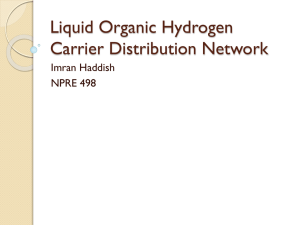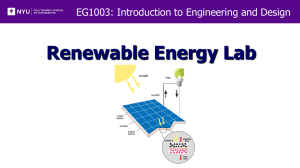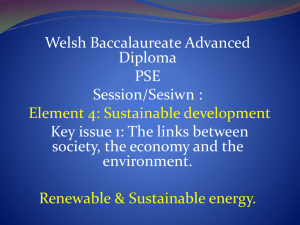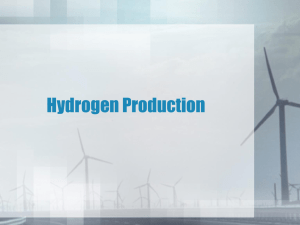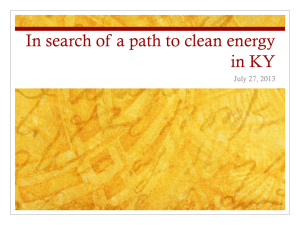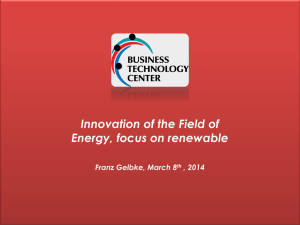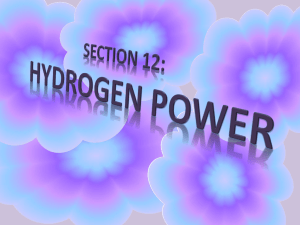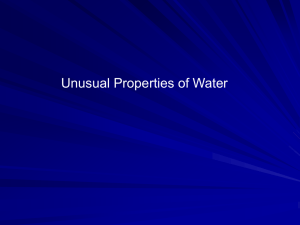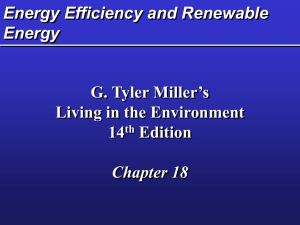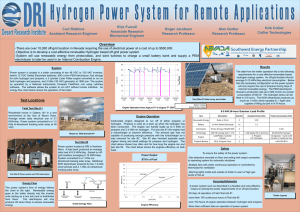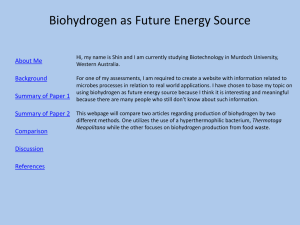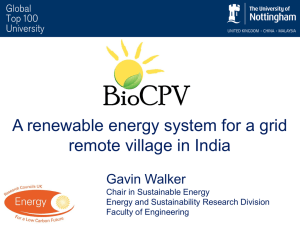TUAB031-2 – Creating Hydrogen To Power Villages (L347)
advertisement
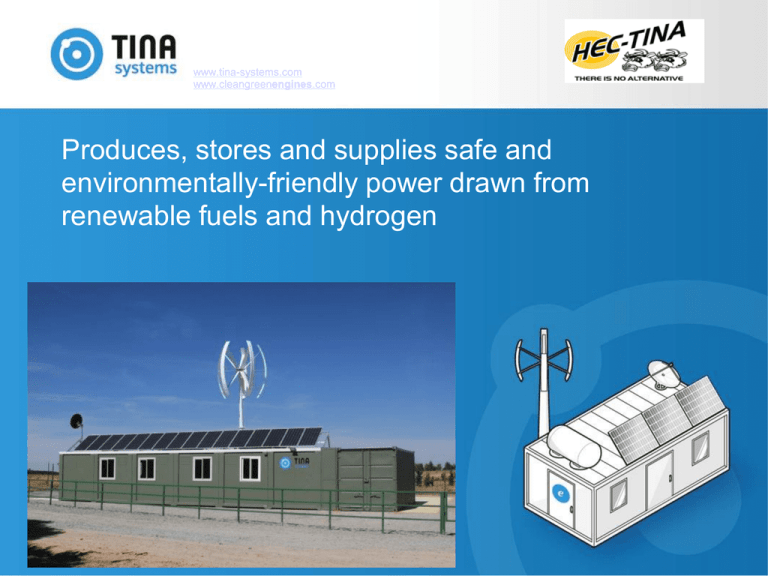
www.tina-systems.com www.cleangreenengines.com Produces, stores and supplies safe and environmentally-friendly power drawn from renewable fuels and hydrogen Health, education, rural electrification, citizen security and development, our primary objectives 1.6 BILLION People around the world do not have access to electricity 900 MILLION People around the world do not have access to potable drinking water The principal barriers to electrifying remote areas are the financial burden of building and operating the necessary energy infrastructure and the on-going financial costs and logistical difficulty of ensuring a dependable, on-going fuel supply. A United Nations study carried out in 120 countries reveals the deep link between development indicators and per capita consumption of electricity, demonstrating than an increase in the availability of energy helps promote a virtuous circle through which quality of life drastically improves against quantitative and qualitative indicators. 70 MILLION Children around the world do not have access to primary and secondary education Primary and secondary education, delivered via the Internet to remote populations without access to electricity, is just one of the many potential application of TINA’s systems. Education is a critical factor contributing to personal happiness and economic prosperity, as well as to advancing social priorities such as autonomy for women and reductions in poverty levels. Other applications for TINA systems are nearly endless, and include rural health, tele-medicine, water treatment, telecommunications and any other applications that require the use of energy. 2 Operation 1 Solar energy 2 Wind energy 3 Hydrogen (H2) and Oxygen (O2) generator 4 Storage tanks for compressed H2 5 Programmable Logic Controller (PLC) to regulate the supply, demand and storage of the energy 6 8 1 7 2 9 6 5 7 3 TINA systems are designed to provide a continuous supply of energy, as well as supplies of hydrogen that can be used as fuel for transportation. 4 Telecommunications link via the Internet for the remote monitoring and transmission and data and voice Electricity generator fueled by H2 8 Work area 9 H2 dispenser for means of transportation The principal source of energy is renewable energy The system uses high-pressure (>350 bar) hydrogen generators which do not require additional compression, and stores energy in the form of hydrogen. This stored energy is available permanently and instantly. This method of storing energy is four to six times cheaper and much more reliable than other available technologies. 3 Operation TINA systems allow for the continuous supply of energy, even during extended periods during which supplies of renewable energy are not available. When the energy generated through renewable sources is not sufficient to cover the demand, the system obtains energy from the stored H2 During optimal availability of renewable sources of energy (solar and/or wind), the system can generate sufficient energy to cover the demand. At night, for example, if energy is produced from renewable sources and there is no demand for energy, the energy is stored as compressed H2 When the energy generated through renewable sources exceeds demand, the surplus is stored as compressed H2 When there is a demand for energy but no energy is being produced from the renewable sources, the required energy is obtained directly from the stored H2 4 Possibilities eTINA to provide tools for on-line primary and secondary distance learning, responding to the population’s needs cTINA production of primary or backup energy for telecommunications systems and the development of GSM and Wimax networks and mobile telephony. fTINA production, storage and supply of fuel (H2) to support transportation needs in remote locations. TINA Systems’ modular design allows different energy production and storage levels, as well as multiple applications for the energy produced. The amount of energy stored by TINA Systems will be tat needed to cover the energy needs based on climate conditions and energy demand. hTINA to provide medical and diagnostic services to remote areas, refrigerate stored medicines and supply oxygen for medical purposes iTINA supply energy to an industrial workshop employing light work tools. wTINA to supply energy to water purification plants. 5 A low cost solution Scale and capacity of energy modules: • Rated power of renewables in kW and percentages in solar and wind The useful operating life of a TINA systems module is greater than 25 years • Rated generator capacity, in kWh • Amount of hydrogen produced by electrolyzer, in m³/h • Hydrogen tanks storage capacity (in m³ of H² up to 400 bars) Defined in response to the following conditions: • Local climate (average annual sunshine hours and annual average wind speed) • Water availability (not required to be potable). The hydrogen generator consumes less than 1 liter of water to produce 1m³ de H² (equivalent 3 Kw) • Energy demand (Number of homes, number of activities within the module, school size, clinic size, amount of water to be treated, etc.) • Hydrogen requirements for transportation 6 A low cost solution We currently have a fully operational demonstration system in Segovia, Spain, as proof of concept, with the following characteristics: Operating module: Primary energy source: 11 kW (6 kW wind and 3 kW solar) 3 kW zero emissions (ZES) hydrogen fueled power generator Hydrogen production generator producing pressured hydrogen at > 200 bar Two storage tanks approved for 350 bars, with capacity to store 180 nm³ of hydrogen at 200 bars to cover daily needs of 9 kW/day for a minimum of 18 days with no renewable energy available. Automated electronic fail safe control system Complementary Optional Systems: Bicycle powered byHonda HICE engine Toyota Prius with HICE engine, modified by Quantum. 7 A low cost solution TINA Modules are based on modular designs in order to cater to different applications and different requirements. The basic configuration of a TINA module is: Renewable energy module (combination of solar and wind) Direct high pressure hydrogen generator (including de-ionized water treatment plant) & hydrogen storage tanks Power electronics to regulate demand/supply/storage Communications link (e.g. Satellite, Wimax...) for remote monitoring, data and voice Sheltered working area 8
